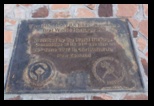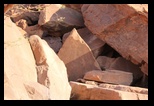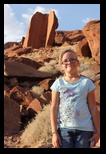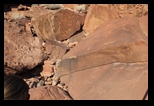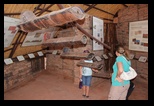Bushman Rock Engravings, Twyfelfontein
The Bushmen, properly known as the San people, were hunter-gatherers. The men hunted and the women gathered berries, edible leaves and roots. They were semi-nomadic and their huts were simple shelters based on an overhanging bush, covered with grass. They lived in family groups and all their food was shared. On the rock overhangs and huge boulders, they painted and engraved.
For about 30 000 years they were the sole inhabitants of southern Africa. They lived within the sustenance capacity of their environment and never killed more animals than they needed. About 2000 years ago, migrants from the Bantu-speaking tribes from the north migrated here with their cattle and sheep. The last four centuries of immigrants from Europe have completed the process of reducing the San to a small remnant. They now live in a few communities in the north of Namibia and north and east of Botswana.
Their art expressed their religious beliefs. The central ritual act was the trance, induced by music and dance, through which supernatural power was experienced. In such a trance, the medicine man could heal, forecast rain and contact the other world where the spirits of the ancestors were.
In the trance the medicine man was helped by the power of the strong animal (Eland, Giraffe, Elephant), who also possessed supernatural power. Often the medicine man was transformed, becoming half man, half animal.
The San shared their world with the animal and
respected them. Hunting scenes and common animals were very rarely painted.
The aim now of rock art researchers is to learn through their knowledge of the
customs and beliefs of the San to understand the art from their point of view.
Click a picture to see a larger view.
